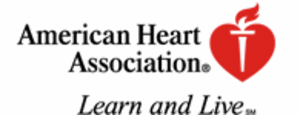Every day there are stories about somebody keeling over from a sudden heart attack, a child choking on a small object, or somebody passing out in a heated environment. What would you do if this happened right in front of you? How would you respond, especially as a lay person who has no experience in the medical field? The first answer that might come to mind is panic. It’s a natural response for someone who isn’t trained or prepared for this type of situation. Of course, concern and urgency will accompany panic, but if you’re not trained in CPR you might have no idea how to help the victim. This is the reason that everyone should take the American Heart Association (AHA) Heartsaver Class.
The AHA Heartsaver Class is a program designed to teach lay people how to perform CPR in a variety of situations. While CPR is nothing to take lightly, the class itself is easy to follow and understand and comes with a student workbook and helpful references, along with a Heartsaver CD and two wallet sized CPR reminders; one for children and another for adults.
The class itself is taught by a qualified instructor who facilitates the training with a DVD and mannequins. The DVD offers step by step, easy to follow instructions and everybody practices on the mannequins with single use plastic mouth shields. The instructor answers any and all questions and makes sure that everyone uses the proper form and procedure. The Heartsaver class teaches Adult, Child, and infant CPR and also how to use an AED; an automated external defibrillator. AED’s can tell when a cardiac arrest victim needs a shock and tells the rescuer when and what to do. Many business, malls, gyms, and daycare centers have one on hand.
At the end of the class everyone is tested to make sure they can perform CPR adequately and promptly. The adult portion of the class lasts about 1 ½ hours, and if you take the Adult, Child and Infant certification it will take approximately 3 hours. The cost is only $25 for the class and approximately $8.50 for the book and CD.
If you work in a health club or with children you’re probably required at some point to get certified in CPR. Even if you aren’t required, it’s always better to be prepared for anything. You never know when someone might collapse, choke, faint or otherwise need CPR. Whether it’s a stranger, your spouse, your child or a loved one you’ll want to master this essential skill so that you can administer life-saving help until trained professionals arrive. Every second counts when the body can not breathe on its own. You could even take theAHA Heartsaver CPR class with your significant other or as a family as one of the most useful and educational activities possible. Check out CPR info. at http://www.americanheart.org/presenter.jhtml?identifier=3011764.
